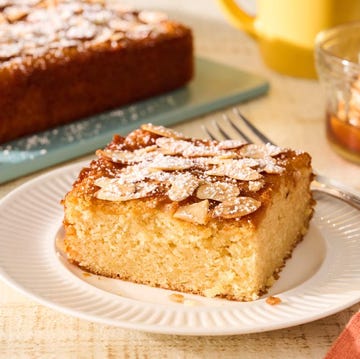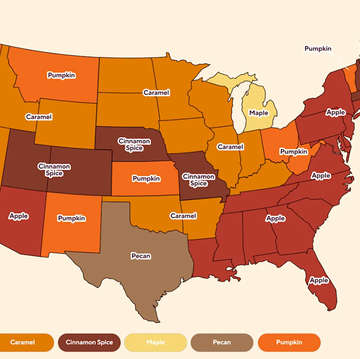So, you've decided to bake a cake from scratch or homemade pie for your next holiday get-together. The first thing you'll need to make sure you have handy is a bag of flour! After all, flour is one of those pantry staples that most people can't live without. In fact, you may have multiple types of flour in your kitchen right now. Whether it's a half-opened bag of all-purpose flour or a container of almond flour, the go-to ingredient is used for more than just baking. Whether you're breading chicken, baking cookies, or even making mac and cheese, there's always a reason to keep flour handy along with your other pantry ingredients.
And if you're in the kitchen a lot, you may go through a bag pretty fast. But if you don't, you may be wondering: Does flour go bad? And if you have no clue when you purchased it, how do you know if it's gone bad? These are questions you'll want to answer before starting that new recipe. Not to worry, you can sift through the details by reading ahead and finding out how to tell if your flour has gone bad. Here’s a hint: the expiration date won't be that helpful.
Does Flour Really Expire?
Let's get right to the point: Yes, flour expires. And yes, no matter what kind of flour (or flour substitute) it is, it will go bad. The first lesson of flour 101 is that they are made of perishable items, most commonly grains such as wheat. Each bag or box you purchase will have a sell-by date or an expiration date from the manufacturer, which is a good indicator of freshness. Now, just because flour is past the expiration date, doesn't necessarily mean it's unsafe to use. Below are some considerations, like the type of flour and how it's stored, that can help you determine if it's gone bad.
How Long Do Different Types of Flour Last?
Depending on the kind of flour, it may have an extended shelf life. Check out the different types of flours for a general rule of thumb:
Refined Flour
Refined flours such as all-purpose, bread, and cake flours typically have the longest shelf-life and will last about one year. The one exception is self-rising flour which is a refined flour but will likely only last three to six months due to the addition of leavening agents like baking powder.
Whole Wheat Flour
Whole wheat flours are unrefined and more susceptible to light and moisture. But even still if you store them properly, they can last for 6 months to a year.
Starch Flour
Starch flours, like potato flour, cornstarch, and tapioca flour, might not contain any wheat, but they have a similar shelf-life to all-purpose flour and will last about a year.
Nut Flour
Nut flours like almond flour are higher in fat and won't last as long, typically less than six months. If you store them in the fridge or freezer, they may last longer.
How to Know if Flour Is Bad?
It's totally fine to throw it out if you don't feel comfortable using it after the expiration date. But since most products are perfectly fine beyond the manufacturer's date, you probably want some ways to tell if it's still good. To paraphrase Toucan Sam, follow your nose... and eyes. If the flour smells rancid, it's probably bad. If the flour has started to turn an off-shade from what you'd expect, it's probably bad. And of course, if there are any signs of pests like bugs or droppings, chuck it immediately. Lastly, the easiest life rule for any questionable ingredient: When in doubt, throw it out.
What Happens if I Use Expired Flour?
If the expired flour is still good, it should act much like non-expired flour. But if that expired flour is bad, well, chances are the end product will be too. Rancid flour will make the recipe taste and perhaps smell bad. Textures may also be affected, making the final product either too dry or too moist. While we don't want to discuss them at length, it's possible to experience gastrointestinal problems as well.
One type of flour that you may want to toss even if it looks and smells fine past the expiration date is self-rising flour. The reason is that it contains leaveners which make baked goods rise in the oven. You can't see or smell if those have expired, but if they are, your recipes will come out flat and most likely rendered inedible.
How to Store Flour
The best way to store flour is in an airtight food storage container. This will ensure freshness and prevent moisture from getting in. You can certainly store your flour at room temperature in the pantry, but you can also use your refrigerator or your freezer for storing flour between uses. The cooler temperatures will help to extend the shelf life! Just be sure to transfer your flour from the paper bag to an airtight container and consider labelling it with the expiration date so you know how long it should last. Many flours can last for up to a year in the fridge or even longer when stored in the freezer.
Pro tip: Make sure to let your flour come to room temperature before using it!













